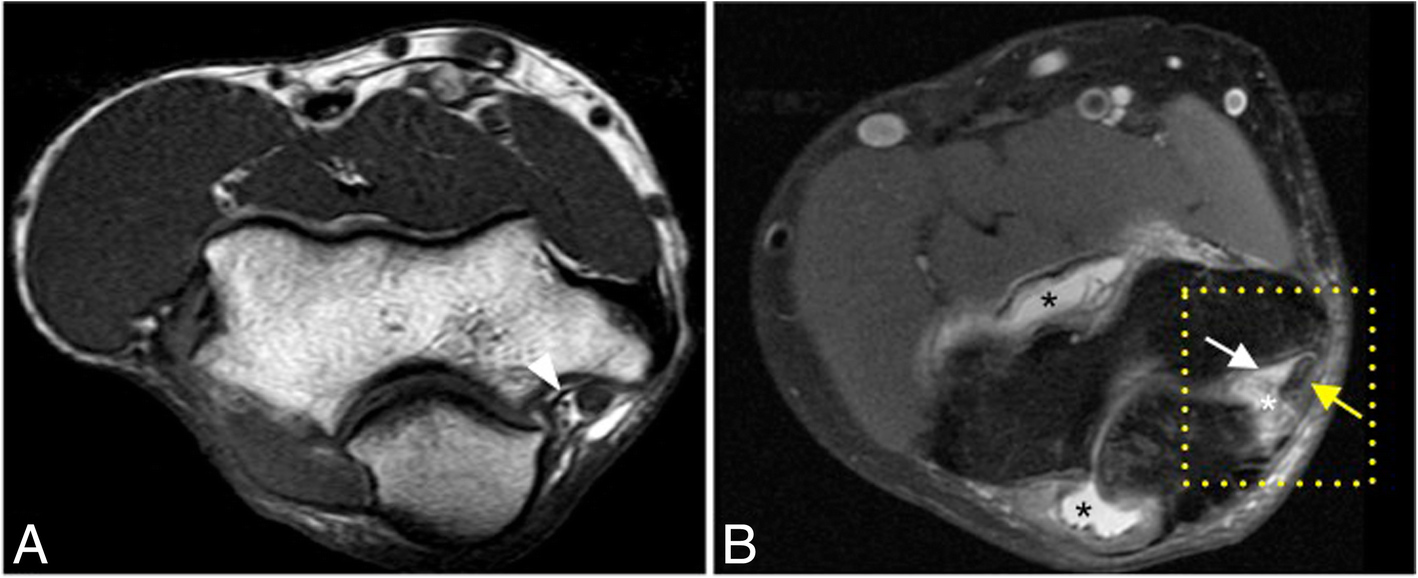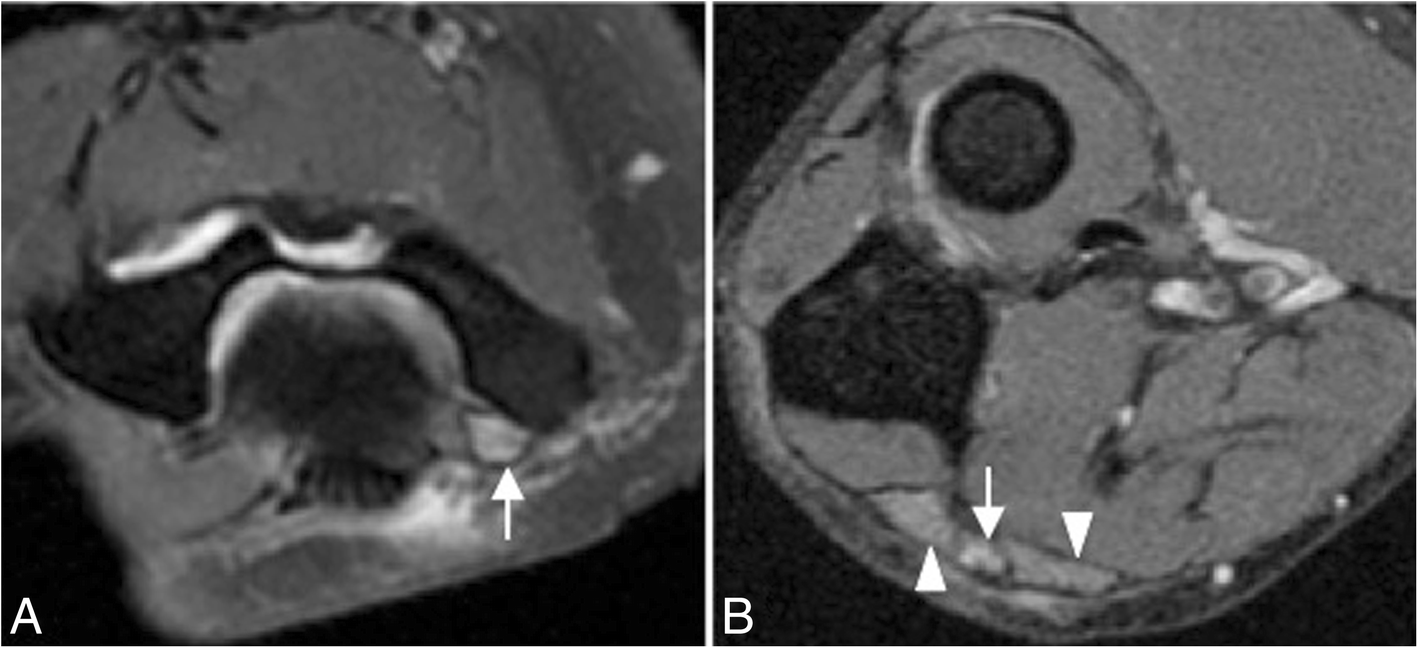Guyon's canal syndrome
Guyon's canal syndrome or ulnar nerve syndrome or handlebar palsy results from compression of the ulnar nerve as it passes through Guyon's canal (a tunnel syndrome).
Epidemiology
The epidemiology of Guyon's canal syndrome is not well documented due to a paucity in literature .
Some conditions that make patients more prone to developing Guyon's canal syndrome are ganglion cysts, hook of hamate fracture and repetitive trauma (e.g. common in cyclists due to handlebar compression).
Clinical presentation
Guyon's canal contains the deep branch of the ulnar nerve, which bifurcates into a motor and a sensory branch. The symptoms depend on the involvement of the various branches of the ulnar nerve and include the following:
- pain and altered sensation in the ulnar half of the 4 digit and the complete 5 digit (sensory supply of the deep branch of the ulnar nerve)
- weakness in flexion, abduction and opposition of the little finger (innervation to the hypothenar muscles)
- weakness in digit adduction and abduction (innervation to the interossei)
- extension of the MCP and flexion of the PIP (innervation to the third and fourth lumbricals) resulting in the characteristic ulnar claw
Radiographic features
Plain radiograph
Radiographs of the wrist can be helpful in identifying fractures of the hook of hamate.
Ultrasound
Ultrasound is helpful in identifying ulnar artery thrombosis, which may result in ulnar nerve compression. Ganglion cysts and soft tissue tumors such as lipomas resulting in ulnar nerve compression may also be identified. Abnormally thick ligaments, variant muscle and nerve routes may also be identified .
MRI
MRI is only indicated in patients that have symptoms not consistent with ultrasound findings, symptoms persisting after surgery and a suspected mass lesion.
T1 weighted MRI is the preferred method of identifying structures in Guyon's canal. The findings in MRI are similar to that of ultrasound, however, MRI is more sensitive and accurate. Furthermore, the size and signal intensity of the ulnar nerve can be assessed on an MRI .
Treatment and prognosis
The treatment of Guyon's canal syndrome is dictated by its etiology.
Conservative management includes physiotherapy exercises, non steroidal anti-inflammatories (NSAID's) and wrist braces.
Surgery may be indicated in some patients that have failed to respond to conservative management or if an acute cause like ulnar artery thrombosis has been identified.
See also
Siehe auch:

 Assoziationen und Differentialdiagnosen zu Loge-de-Guyon-Syndrom:
Assoziationen und Differentialdiagnosen zu Loge-de-Guyon-Syndrom:

